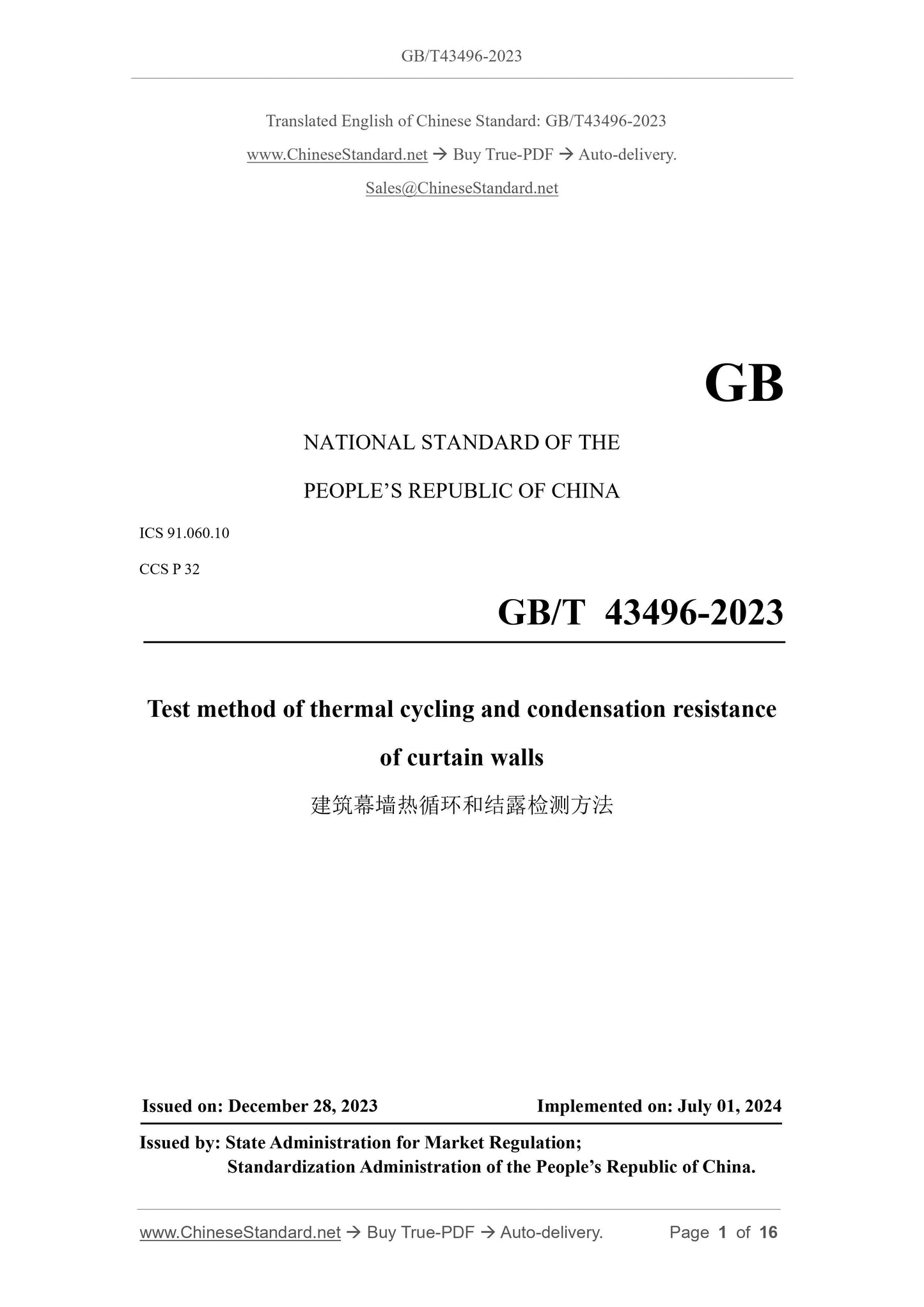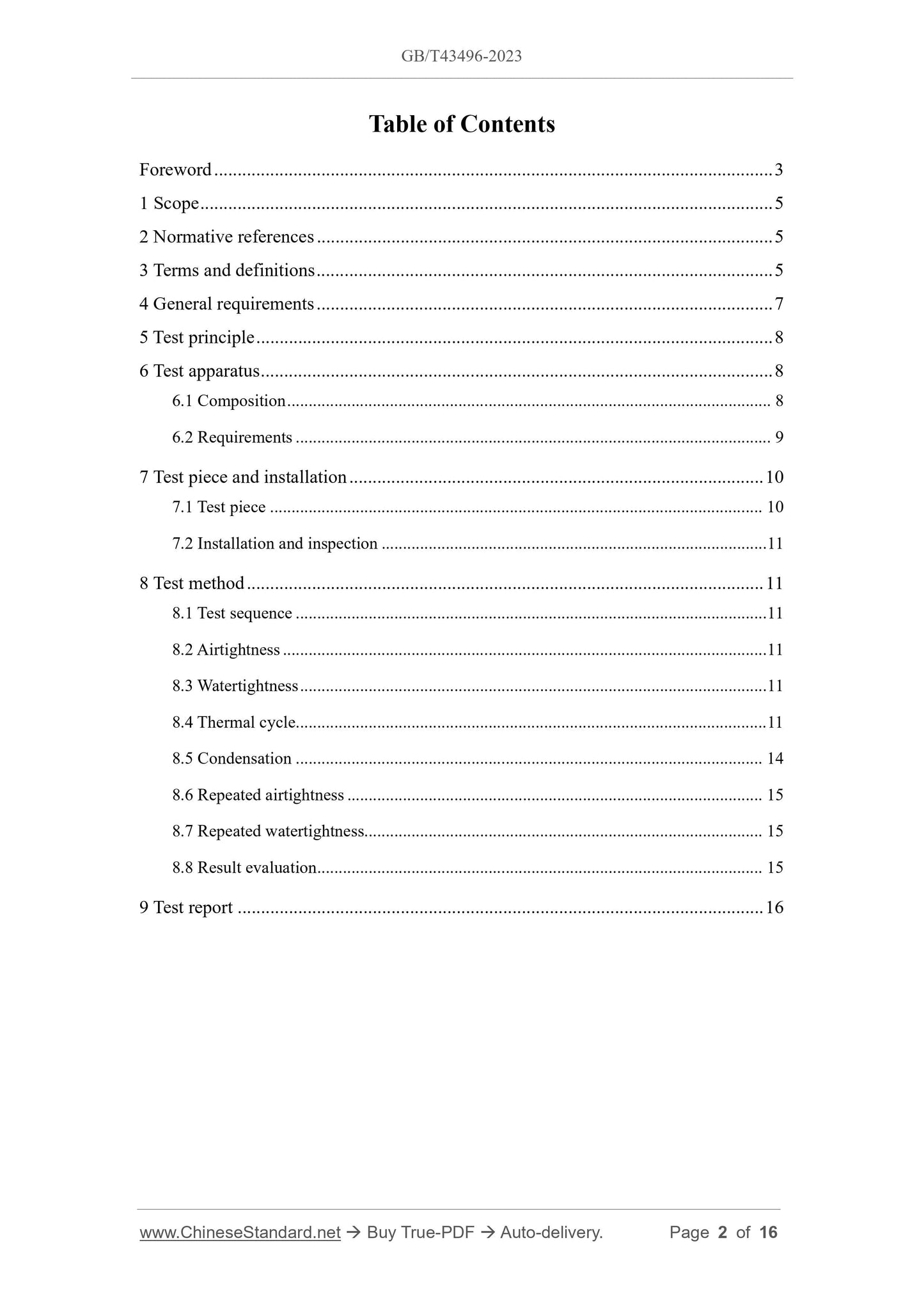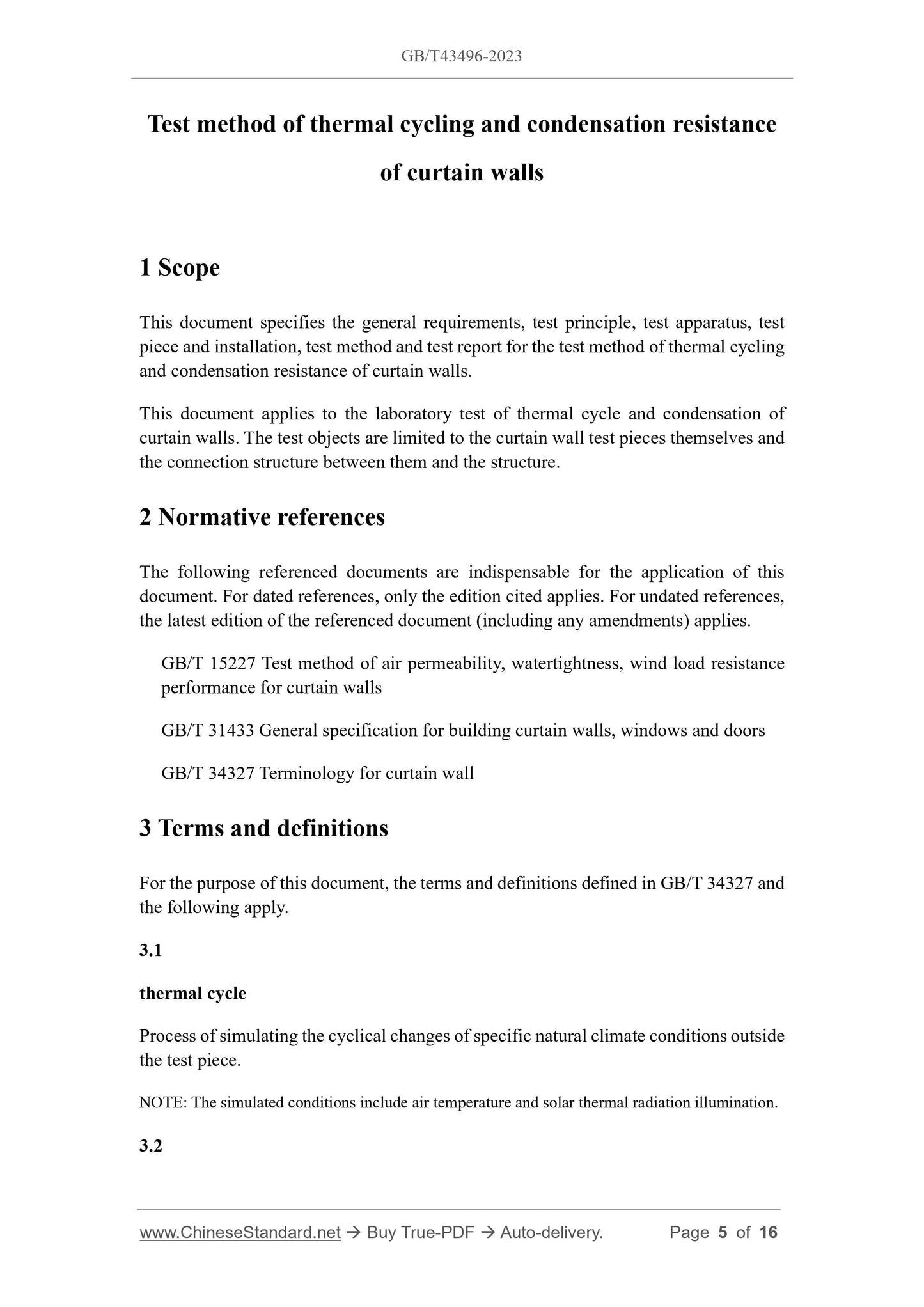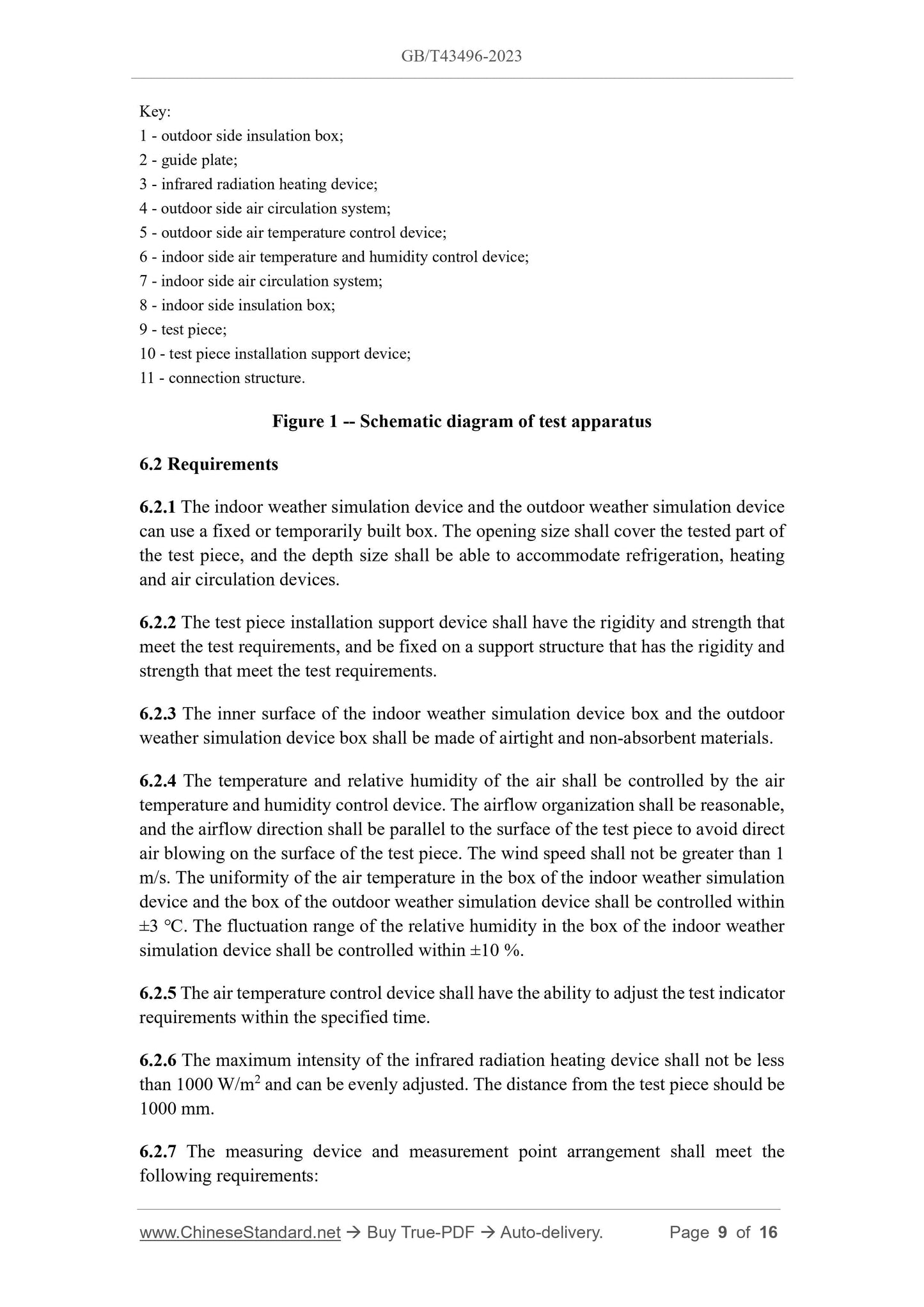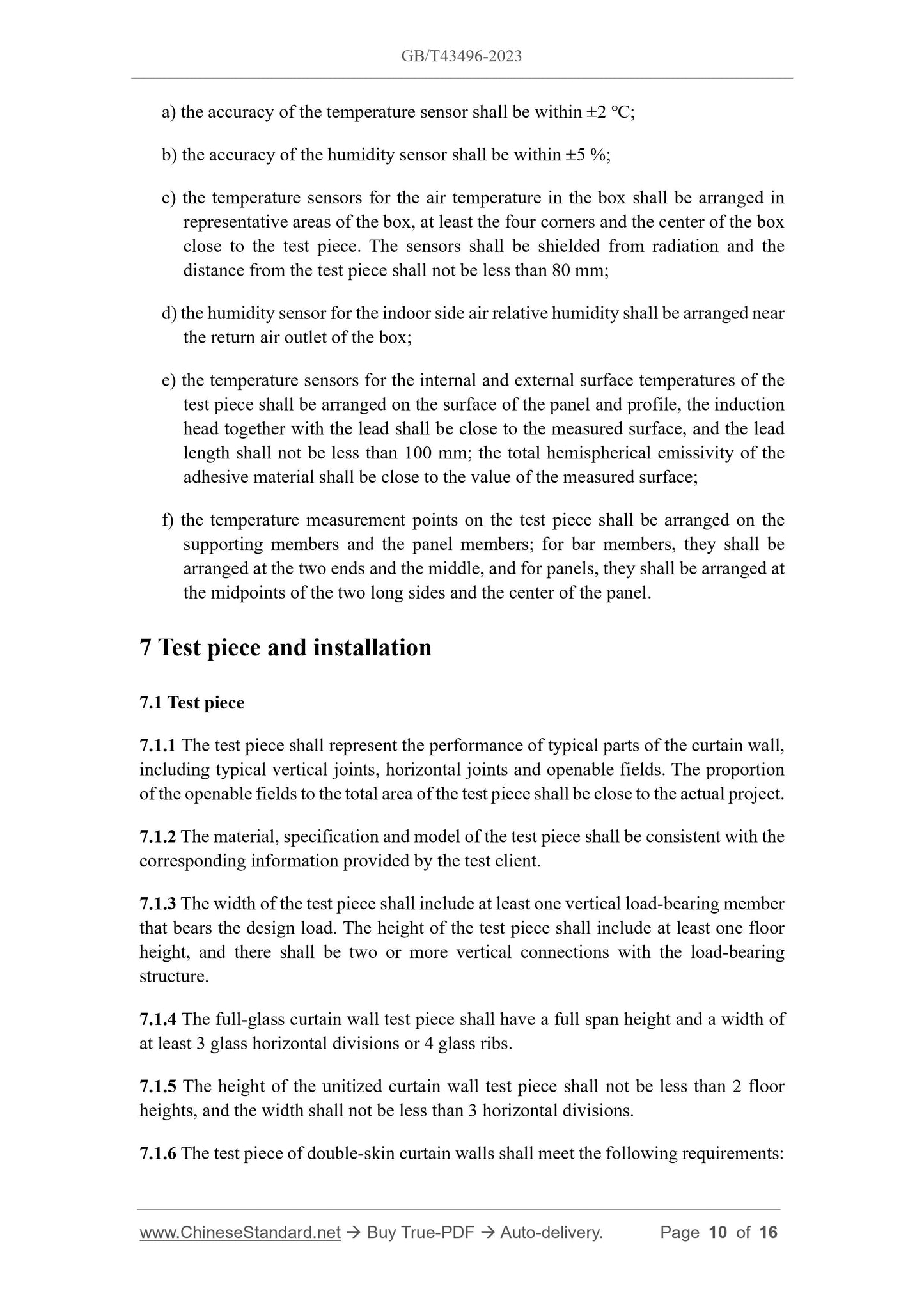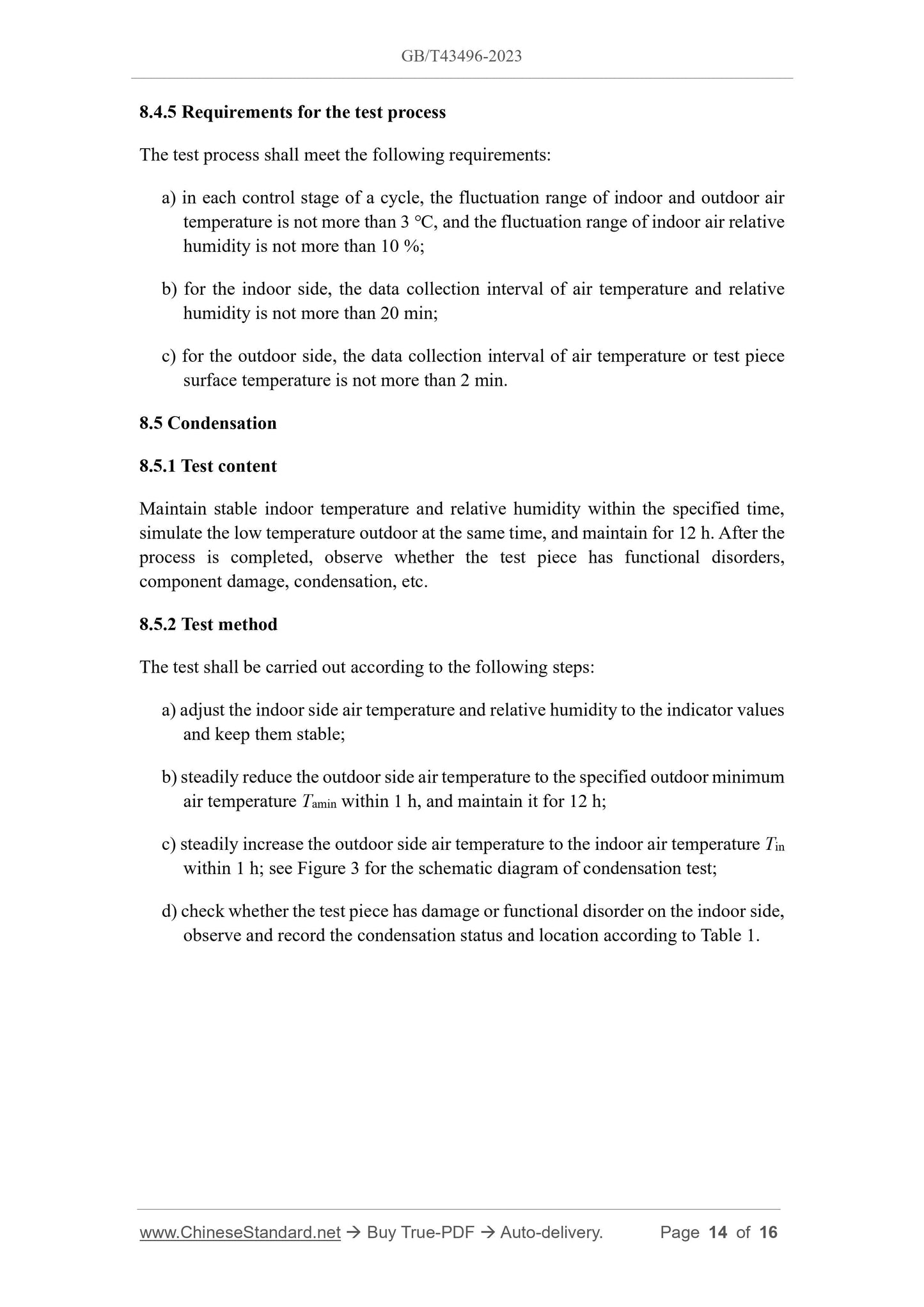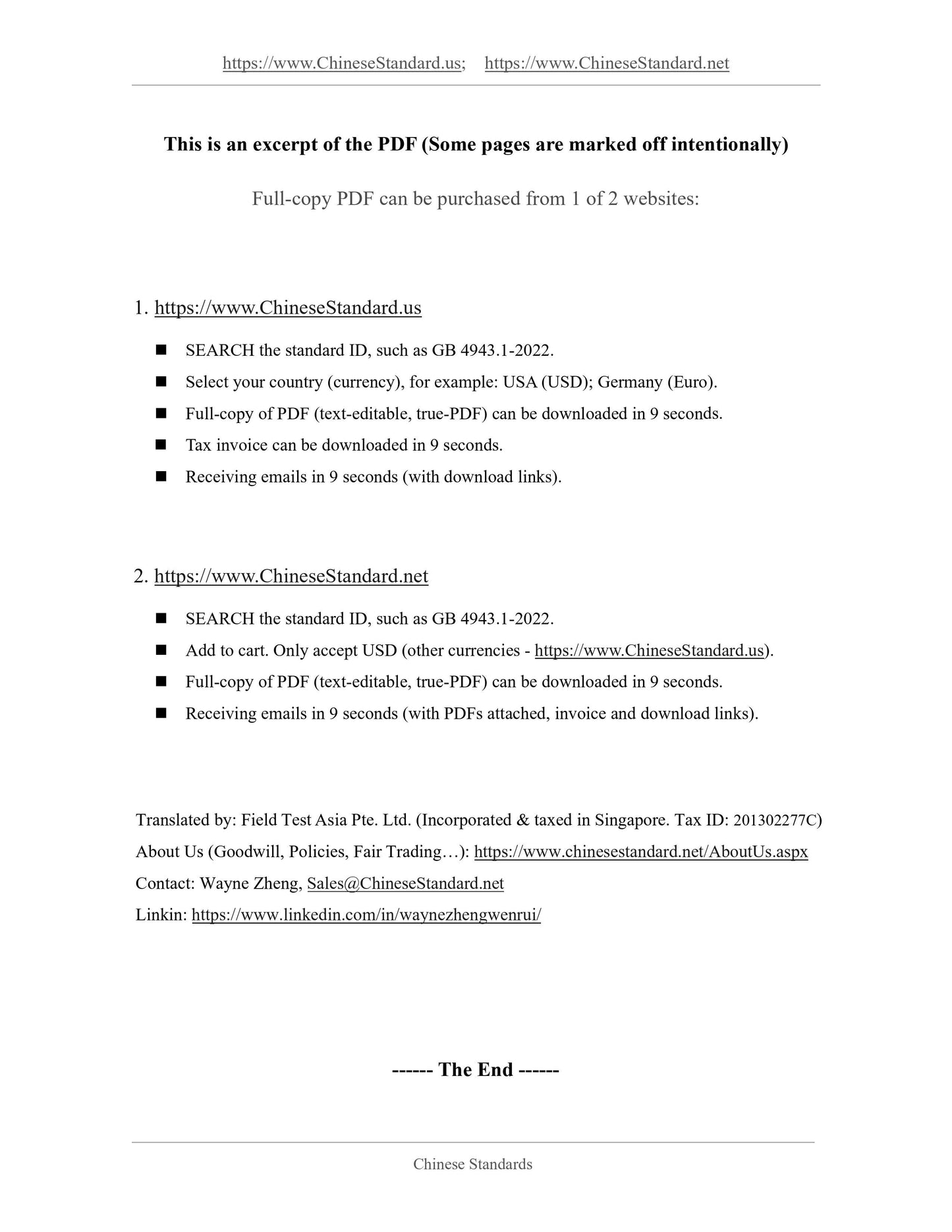1
/
of
8
www.ChineseStandard.us -- Field Test Asia Pte. Ltd.
GB/T 43496-2023 English PDF (GB/T43496-2023)
GB/T 43496-2023 English PDF (GB/T43496-2023)
Regular price
$275.00
Regular price
Sale price
$275.00
Unit price
/
per
Shipping calculated at checkout.
Couldn't load pickup availability
GB/T 43496-2023: Test method of thermal cycling and condensation resistance of curtain walls
Delivery: 9 seconds. Download (and Email) true-PDF + Invoice.Get Quotation: Click GB/T 43496-2023 (Self-service in 1-minute)
Newer / historical versions: GB/T 43496-2023
Preview True-PDF
Scope
This document specifies the general requirements, test principle, test apparatus, testpiece and installation, test method and test report for the test method of thermal cycling
and condensation resistance of curtain walls.
This document applies to the laboratory test of thermal cycle and condensation of
curtain walls. The test objects are limited to the curtain wall test pieces themselves and
the connection structure between them and the structure.
Basic Data
| Standard ID | GB/T 43496-2023 (GB/T43496-2023) |
| Description (Translated English) | Test method of thermal cycling and condensation resistance of curtain walls |
| Sector / Industry | National Standard (Recommended) |
| Classification of Chinese Standard | P32 |
| Classification of International Standard | 91.060.10 |
| Word Count Estimation | 14,153 |
| Date of Issue | 2023-12-28 |
| Date of Implementation | 2024-07-01 |
| Issuing agency(ies) | State Administration for Market Regulation, China National Standardization Administration |
Share
